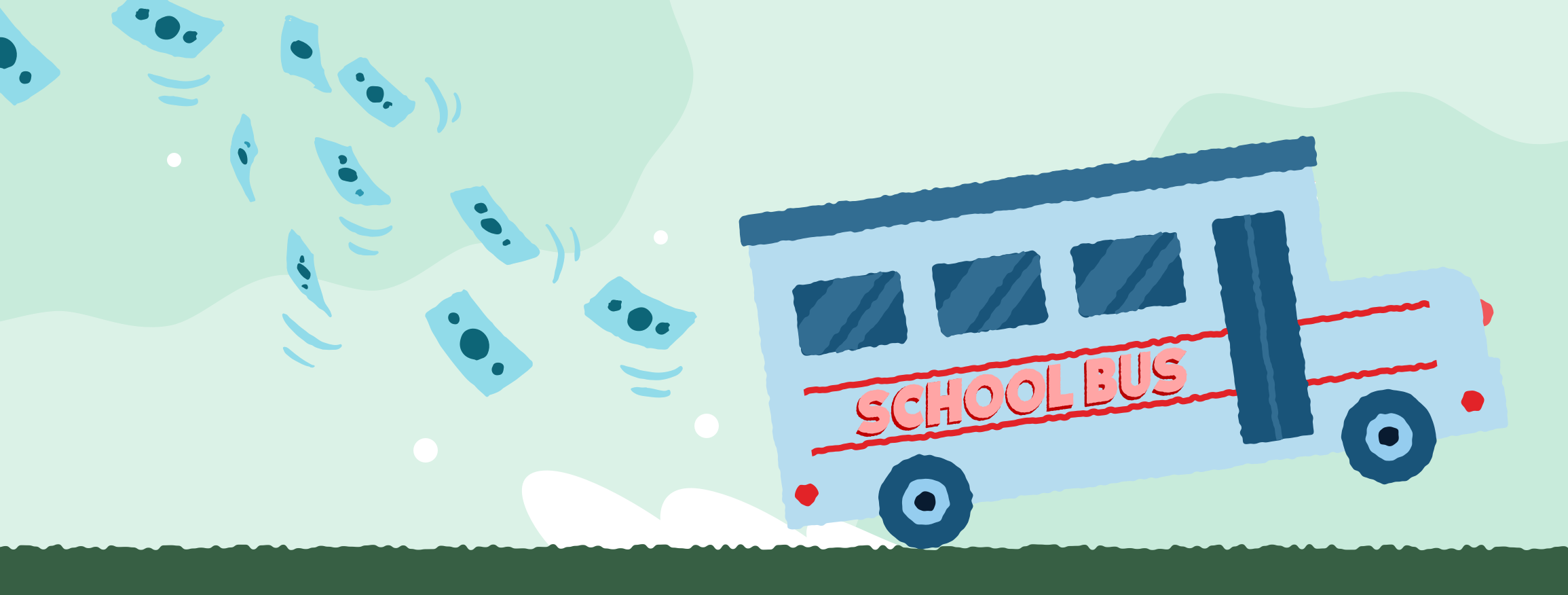For decades, book fairs have been a primary source of funding for schools. Since the 1980s, Scholastic alone has hosted over 120,000 book fairs annually in the United States, selling more than 100 million books per year. But this popular fundraising model has a fundamental flaw: you need disposable income to participate. In this blog, we’re diving into book fairs, income inequality, and why readathons are a more equitable fundraising solution to help bridge the income gap.

The Downside of Book Fairs
Most schools think of book fairs as a fun way to raise money to support their library budget and get more books on the shelves. But for many students, book fairs bring up feelings of shame and alienation. As bestselling sci-fi author Elizabeth May tweeted: “Scholastic Book Fairs are actually the first childhood memories I have of realizing we were poor. People don't tend to think of books as conspicuous consumption, but they absolutely are.”
During book fairs, schools raise money based on the number of products they sell, including books and toys, school supplies, posters, and other items. They earn a percentage of the total profits from the fair—which means that students have to buy things for the fundraiser to be successful. This explains the big promotional push that schools make ahead of book fairs: they send home flyers, they hype up the event via special announcements, and they give classes special times to browse the selections. All of this hoopla puts tremendous pressure on kids and parents to buy and can result in shame and embarrassment for kids who walk away empty-handed.
The reliance on student dollars also means that wealthier schools and districts will make more from their fundraisers, while underfunded schools will continue to struggle. As Danika Ellis writes in her article on inequality in school book fairs: “Underfunded schools can also feel a lot of pressure to try to make the fairs as profitable as possible, because it constitutes the majority of their library budget. Since their students usually have less money, this places a further burden on them.”
While companies like Scholastic have tried to alleviate some of the financial burden by sending boxes of free and low-cost books to schools in need, lower-middle-income students still feel alienated when they walk out of the book fair without making a purchase—especially when many of their peers are not just buying books, but also toys and posters. Schools need a more equitable way to get students involved, and that’s where readathons come in.

Readathons Are More Equitable and Bring Schools More Money
Readathons are a superior alternative to book fairs for many reasons. First, and most importantly, children at any income level can participate. All students can read along with their peers and participate in fundraising events—and if schools track fundraising by numbers of donations obtained, versus dollars raised, all kids can be recognized equally for their fundraising efforts. Book fairs typically rely on the students' immediate and local family providing money for them to buy a physical product, usually at least $10. But a readathon lets students reach their family and network wherever they are and gives them an easy way to contribute and see the impact of their contribution. And with this donation-based fundraising model where any amount is accepted, it makes it easy to get the whole community involved, reducing financial pressure on individual parents.
Another important differentiator for readathons is the profit margin. With Beanstack’s readathon platform, for example, schools get to keep a much larger percentage of the profits than with a book fair. Scholastic book fairs, for example, only send between 30 and 50% of the profits back to schools—much less than the 90% that schools receive from a Beanstack Reading Fundraiser. That means every school, no matter their level of funding, will benefit more from a readathon.
Last, readathons are more effective at actually getting kids to read. While both book fairs and readathons encourage students to pick up a book, readathons add an extra incentive—to earn money, students actually have to read. Plus, if you opt to use a mobile app like Beanstack for your school’s readathon, you can reap the benefits year-round. Even after your readathon is over, you can continue to build a culture of reading at your school via regular reading challenges.
Prioritizing Equity During Your Readathon
The best fundraisers bring your school community together—and that means ensuring that every student can contribute. Readathons offer the best of both worlds: allowing your school to prioritize literacy and raise critical funds without alienating lower-middle-income families.
Beanstack’s mobile app makes it easier than ever for your students to raise money while they read. To learn more about Beanstack’s readathon program, go to beanstack.com/reading-fundraiser.

Learn More
Run your school's next readathon with Beanstack.
